The skills of the pilots of GE235 have been questioned. The mere fact that Transasia is requiring its pilots to undergo tests is not proof of pilot error. It is most likely a precautionary measure. The FDR - flight data recorder - shows some very strange readings. The graphic representation of the engine data published by Taiwan's ASC is reproduced full size below. (If it does not show full size, right click and select 'view image'.)
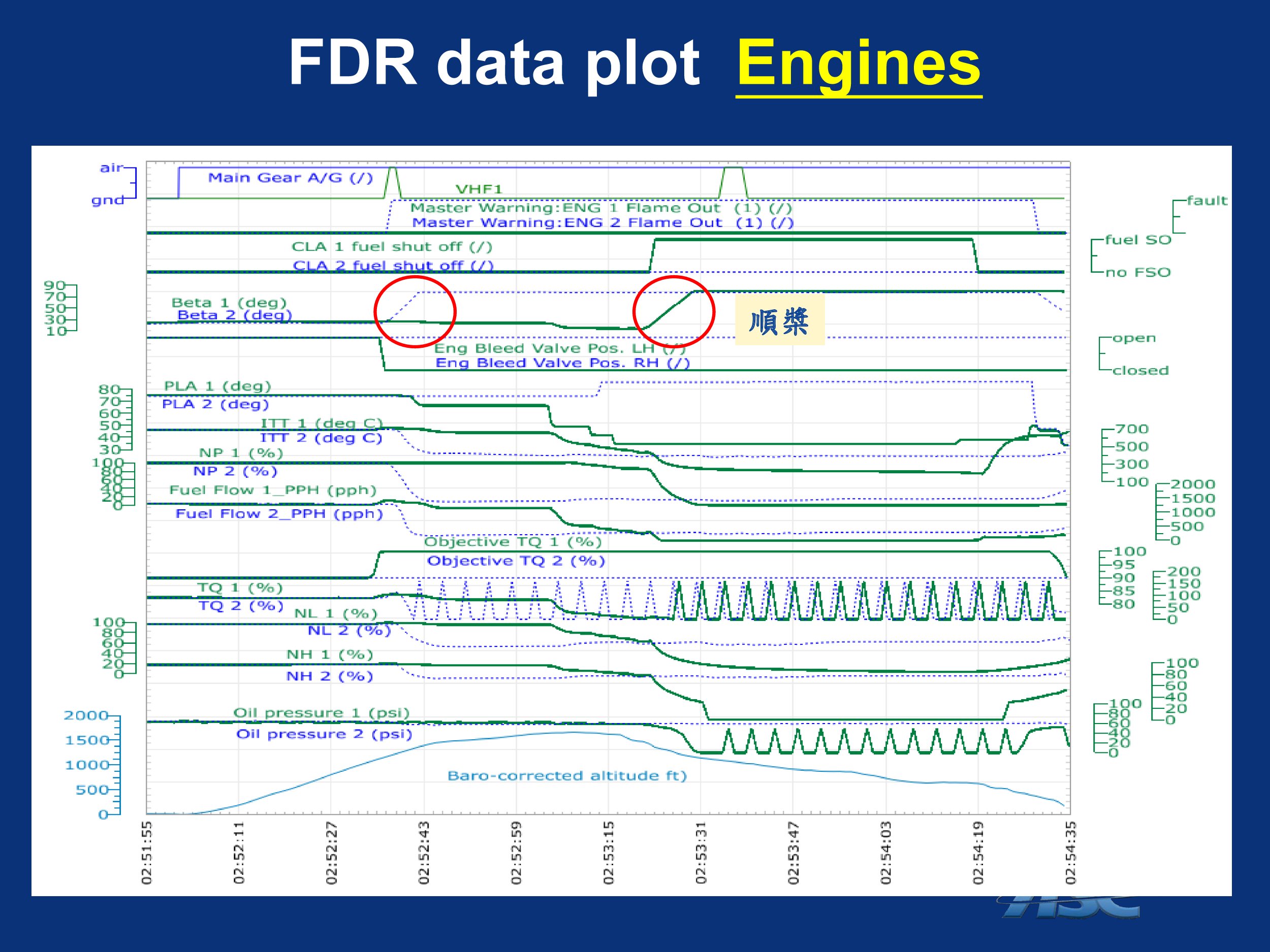
Explanatory notes:
Beta is a range of prop blade angles.
The bleed valve usually refers to the high pressure air from a good engine being available to start a failed engine.
PLA - power lever angle.
NP (Np, NP) - the value (N) of the power turbine rpm.
Objective TQ - torque requested from engine / prop.
TQ - torque as measured.
NL (Nl, NL) - the value (N) of the low pressure gas generator rpm as a percentage.
NH (Nh, NH) - the value (N) of the high pressure gas generator rpm as a percentage.
Nb: the notes above are subject to revision: there is some variation in the terminology used by different manufacturers.
Pilot error or malfunction?
The torque and oil pressure fluctuations and other odd readings seen in the FDR must be explained. The triangular spikes have a regular 4 second period: 1 second rise, 1 second fall and 2 seconds at zero. The #1 engine torque spikes lag the #2 engine spikes by a regular 1 second. That points to anomalous synchronous engine behaviour. The synchrophaser, if active, attempts to synchronise both prop rpm and prop phase. If the props are in phase then they match angles in video stills. Still frames of GE235 show a mismatch.
Regardless of whether malfunction or pilot error caused loss of power to both props, a greater loss of life was averted by skillful flying.
It is clear, at least to the author, that flight GE235 missed high voltage transmission lines by a very narrow margin. The interim report of the ASC shows the plane's last recorded altitude as 153.9 feet. That is about the same height as the nearby electricity transmission tower. The Google streetview image below shows the Huangdong Boulevard crash site from Sun Yat Sen Freeway. The blue lines show the recently erected cables which cross the river diagonally. (The blue lines do not follow the true catenary.) The orange lines show a projection of the glide path between buildings as the probable intended path. The red lines show the actual final path.
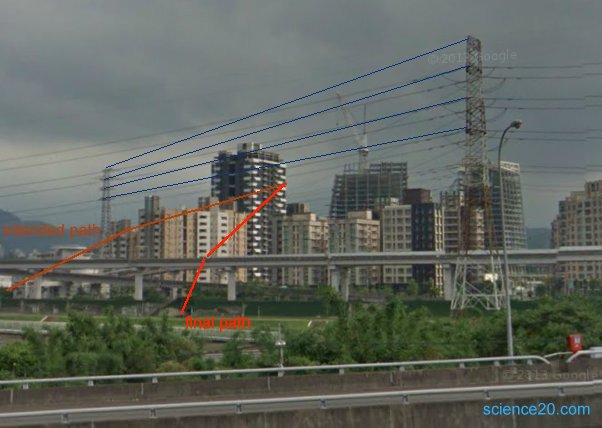
Transasia crash site viewed from Sun Yat Sen Freeway.
There has been no official report regarding the transmission lines which the plane so narrowly avoided in the final seconds. That is strange, since examination of the area surrounding a crash site is basic to the scientific investigation where it appears that the pilot was trying to get the plane down. The investigator must look up as well as down: damage to trees or structures can show the investigator the final descent angle. Further, the presence of obstacles likely to have been seen by the pilot only in the final seconds can reveal much about the pilots intentions and final control movements. Many a pilot has crashed while avoiding trees, fences or transmission lines seen only during the last moments of a forced landing.
The exact points of impact with the taxi and with the crash barrier at the edge of the elevated freeway can be seen from three different viewpoints. In one video a car near the taxi can be seen to brake. That car was also equipped with a dashcam. Atop the triangular road sign is a traffic-cam. That camera is shown below, together with an image from the camera.
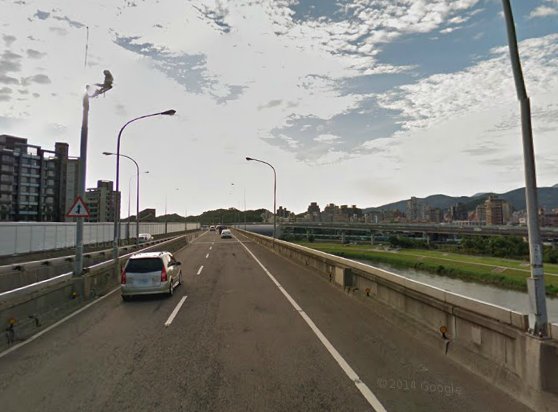
The traffic camera on Huangdong Boulevard
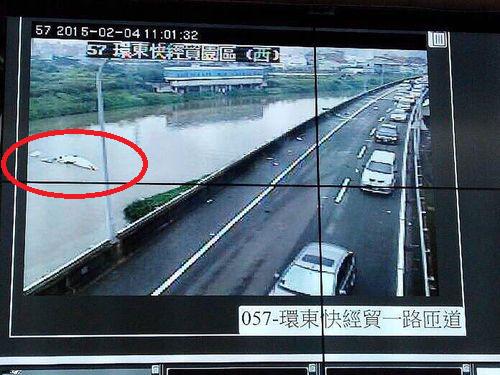
Still frame from the Huangdong Boulevard traffic camera.
There is much readily identifiable street furniture in the videos. This enables any reader to verify the location of the power lines and the exact spot where the taxi was struck. The voltage will be at least 110 kilovolts and may be around 160 kV. Investigators in Taipei have the advantage of being able to determine from the power company the exact height of the power lines and their voltage.
Forced landing
When a plane is without power it must descend. A lone pilot must try to restart the engine/s while all the time looking for the clearest and flattest place to set down if a forced landing is inevitable. Flight GE235 had three pilots to share the tasks. It is highly likely that the PF - pilot flying - would maintain flight while looking for a forced landing site and that the other two would focus on troubleshooting inside the flight deck. Given the height, or rather lack of it, and the hostile terrain with its high-rise buildings and hills: gravity and geometry dictate that the only area where a forced landing might meet with 100% survival is the small area across the Keelung river from Huangdong Boulevard. Although power lines run parallel to the river in that area the plane would have easily passed underneath them. The power lines on the far bank are just visible in the image below, with the newer power lines readily seen at the top of the image.
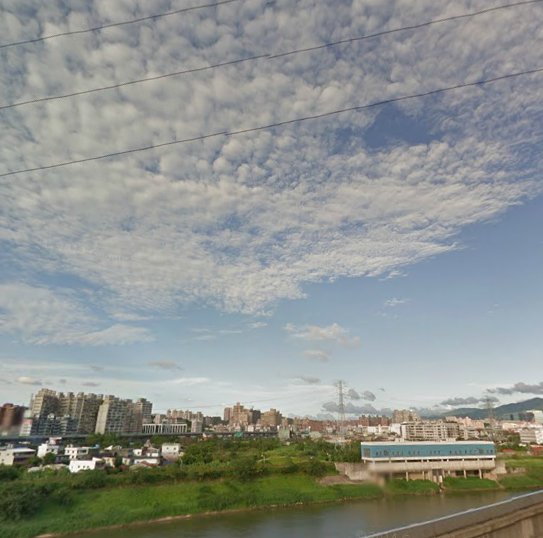
Presumed intended forced landing site.
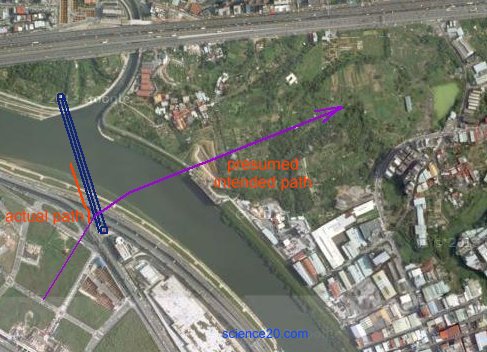
Map showing presumed intended forced landing site.
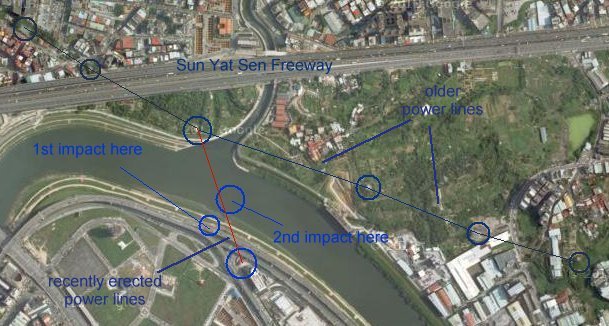
Power lines in the accident location.
Did the taxi impact save lives?
The last recorded ground speed was 91 knots. That's 104.72 mph or 168.53 kph. That is consistent with the impact diagonal seen on the taxi which the plane struck. The diagonal damage closely tracks and records the resultant of the plane's and the taxi's velocities. It is a valuable piece of evidence. The energy absorbed by the taxi no doubt contributed to the survivability of this accident. It is even probable that, had the taxi not been there, more fatalities would have occurred. Note in the image below how the right front tire has disipated energy as heat. That is the source of the smoke seen in the videos as the taxi is forced sideways. If the wing had hit the road at that point instead of the taxi the plane would likely have cartwheeled sooner.

Damage to the taxi.
Mind your language
It appears that much of what has been reported by the media regarding this tragic event is based on poor translations of spoken and written Chinese. In the interest of accuracy the timeline of flight GE235 is reproduced below in Chinese characters, Hanyu Pinyin and English. Please note that the Hanyu Pinyin and English versions may contain errors despite the author's best efforts.
From the official interim report of Taiwan's Aviation Safety Council - ASC.
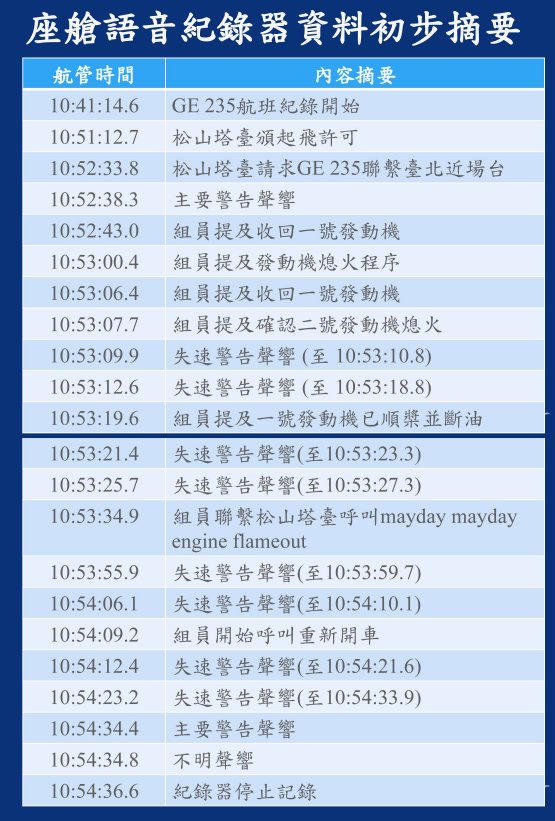
Hanyu Pinyin
10:41:14.6 GE 235 hángbān jìlù kāishǐ
10:51:12.7 Sōngshān tǎtái bān qǐfēi xǔkě
10:52:33.8 Sōngshān tǎtái qǐngqiú GE 235 liánxì táiběi jìn chǎng tái
10:52:38.3 Zhǔyào jǐnggào shēngxiǎng
10:52:43.0 Zǔyuán tí jí shōuhuí yī hào fādòngjī
10:53:00.4 Zǔyuán tí jí fādòngjī xīhuǒ chéngxù
10:53:06.4 Zǔyuán tí jí shōuhuí yī hào fādòngjī
10:53:07.7 Zǔyuán tí jí quèrèn èr hào fādòngjī xīhuǒ
10:53:12.6 Shīsù jǐnggào shēngxiǎng (zhì 10:53:18.8)
10:53:19.6 Zǔyuán tí jí yī hào fādòngjī yǐ shùn jiǎng bìng duàn yóu
10:53:21.4 Shīsù jǐnggào shēngxiǎng (zhì 10:53:23.3)
10:53:25.7 Shīsù jǐnggào shēngxiǎng (zhì 10:53:27.3)
10:53:34.9 Zǔyuán liánxì sōngshān tǎtái hūjiào mayday mayday engine flameout
10:53:55.9 Shīsù jǐnggào shēngxiǎng (zhì 10:53:59.7)
10:54:06.1 Shīsù jǐnggào shēngxiǎng (zhì 10:54:10.1)
10:54:09.2 Zǔyuán kāishǐ hūjiào chóngxīn kāichē
10:54:12.4 Shīsù jǐnggào shēngxiǎng (zhì 10:54:33.9)
10:54:34.4 Zhǔyào jǐnggào shēngxiǎng
10:54:34.8 Bùmíng shēngxiǎng
10:54:36.6 Jìlù qì tíngzhǐ jìlù
Translation using Google translate and a news release from ASC.
10: 41: 14.6 GE 235 flight record starts
10:51: 12.7 Matsuyama tower issues takeoff clearance
10:52: 33.8 Matsuyama requests GE 235 Contact Taipei approach
10:52: 38.3 Master warning sounds
(master warning sounded in the cockpit associated with right engine(2) flame out procedure message on display unit. The crew called it out. )
10:52: 43.0 Crew refers to #1 engine recover
10:53: 00.4 Crew refers to engine flameout procedures
(the recorded parameters indicated that the left engine power lever(1) was progressively retarded to flight idle.)
10:53: 06.4 Crew refers to #1 engine recover
10:53: 07.7 Crew mentions confirm #2 engine flameout
10:53: 12.6 Stall warning sounds (to 10: 53: 18.8)
10:53: 19.6 Crew mentions #1 engine feathered and fuel cut
10:53: 21.4 stall warning sounds (to 10: 53: 23.3)
(At 10:53:24, the left engine condition lever(1) was set to fuel shutoff position resulting in left engine(1) shutdown.)
10:53: 25.7 stall warning sounds (to 10: 53: 27.3)
10:53: 34.9 Crew contact Matsuyama tower with report mayday mayday engine flameout
10:53: 55.9 stall warning sounds (to 10: 53: 59.7)
10:54: 06.1 stall warning sounds (to 10: 54: 10.1)
10:54: 09.2 Crew begin the engine restart procedure
10:54: 12.4 Stall warning sounds (to 10: 54: 33.9)
(At 10:54:20 the recorded parameters indicates a restart of the left engine(1). )
10:54: 34.4 Master warning sounds
10:54: 34.8 Unknown sound recorded by CVR
10:54: 36.6 Both recorders stop recording
Readers' comments are welcome.
Edit: added first known photo of the plane in the water - see comments below.
-----------------------------------------------------------------------
Recommended reading
Why System Safety Professionals Should Read Accident Reports
C. M. Holloway, C. W. Johnson, 2006, NASA Langley Research Center.
Previous articles on GE235
TransAsia ATR 72 Crashes Into Keelung River
TransAsia GE235 crash - Plane Missed Power Cables
Other air accident articles
AirAsia QZ8501 No Explosion
AirAsia 8501 - News, Rumours, Facts And FACs
Could A Fire Have Caused The Loss Of MH370?
MH370 - Why Search Teams Ignored Georesonance
Boeing 747 AAIB Accident Report Reveals Electrical Failures
Underwater Acoustics - Searching For The MH370 Flight Recorder
.




Comments